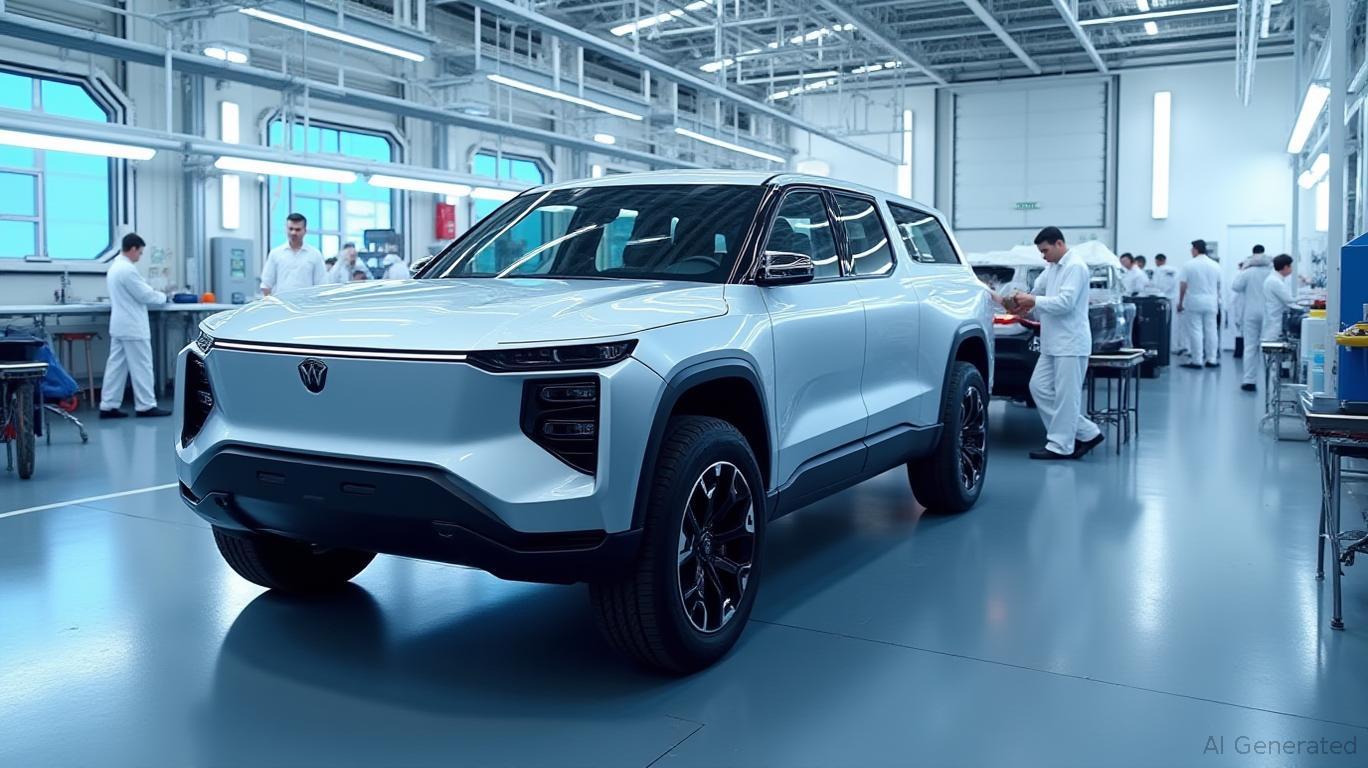Rivian's Q1 Results: A Step Forward Amid Persistent Challenges
Rivian Automotive’s Q1 2025 earnings report highlighted a narrowing net loss and rising revenue, signaling progress in its journey toward profitability. Despite these positives, the EV manufacturer faces headwinds from global trade policies and supply chain constraints. Let’s dissect the numbers and their implications for investors.
Financial Highlights: Navigating to Profitability
- Revenue Growth: Rivian reported $1.24 billion in Q1 revenue, exceeding estimates of $1.01 billion. This marks a 12% sequential decline from Q4 2024’s $1.73 billion but reflects a focus on margin improvement over volume.
- Gross Profit Milestone: The company achieved a record $206 million in gross profit, its second consecutive profitable quarter. Gross margin expanded to 16.6%, up from 10% in Q4 2024, driven by cost reductions and software/service revenue growth.
- Net Loss Reduction: The net loss narrowed to $545 million, a significant improvement from Q1 2024’s $1.5 billion loss. This aligns with Rivian’s goal of “modest positive gross profit for 2025.”
Operational Progress and Strategic Shifts
- Vehicle Deliveries: Rivian delivered 8,640 units (R1S and R1T models) in Q1, down from Q4’s 14,183 due to a motor component shortage. However, production rose to 14,611 units, highlighting improved manufacturing efficiency.
- Delivery Guidance Cut: Full-year 2025 deliveries were revised downward to 40,000–46,000 units from 46,000–51,000. This adjustment reflects risks from global trade policies, including tariffs on automotive components and batteries.
- Cash Position: Rivian ended Q1 with $7.2 billion in cash, bolstered by a $1 billion milestone payment from its joint venture with Volkswagen Group. This funding, contingent on gross profit targets, underscores strategic partnerships’ importance.
Key Challenges and Risks
- Trade Policy Uncertainty: Despite 100% U.S.-based manufacturing, Rivian faces tariff-related costs. CFO Claire McDonough noted tariffs could raise bill of materials (BOM) costs, necessitating a shift in battery sourcing from South Korea to Arizona by 2027.
- CapEx Surge: Capital expenditures were raised to $1.8–1.9 billion for 2025, up from $1.6–1.8 billion, due to tariff impacts and a 1.1 million-square-foot expansion of its Illinois plant.
- Regulatory Scrutiny: A $6.6 billion DOE loan for its Georgia facility remains under review, delaying potential liquidity gains.
Market Reaction and Competitor Context
Rivian’s shares dipped 1.1% post-earnings, reflecting investor caution around macroeconomic risks. Competitors like Lucid reported narrower losses but weaker revenue, while Tesla’s scale and margins remain unchallenged. Rivian’s focus on software revenue (up to $318 million in Q1) positions it uniquely, but execution on the R2 model will be critical.
The Road Ahead: R2 Launch and Liquidity
- R2 Progress: Design validation builds for Rivian’s next-generation vehicle are underway, with production slated for 2026. The R2’s $45,000 price point aims to broaden its market reach.
- Liquidity Outlook: With $7.2 billion in cash and potential $5.8 billion from Volkswagen, Rivian’s near-term liquidity appears secure. However, sustaining margins amid rising CapEx and trade costs will test management’s agility.
Conclusion: A Fragile Path to Profitability
Rivian’s Q1 results reflect tangible progress in cost management and gross margin expansion. The narrowing net loss and software-driven revenue growth are encouraging, but the company remains vulnerable to external factors like tariffs and supply chain bottlenecks.
Key Data Points:
- Gross Margin: 16.6% (up from 10% in Q4 2024).
- Cash Burn Rate: Adjusted EBITDA loss of $329 million in Q1, within the $1.7–1.9 billion annual guidance.
- R2 Potential: Targeting 2026 launch with a $45,000 starting price, leveraging economies of scale.
Investors should remain cautious but optimistic. Rivian’s liquidity and strategic partnerships provide a buffer, but profitability hinges on executing its R2 roadmap and navigating trade complexities. For now, Rivian is a work in progress—ambitious but unproven at scale.
Ask Aime: "Rivian's Q1 Profitability Progress Amid Headwinds"










